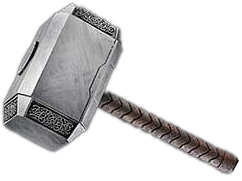Subsection1.4.2Homology of a pair
Definition1.4.9Homology of a pair
\(H_*(X,A) = H_*(C_*(X,A))\) is the homology of the pair \((X,A)\).
From this we obtain:
Definition1.4.10Long exact sequence of a pair
The long exact sequence of the pair \((X,A)\) is
\[ \cdots \to H_n(A) \to H_n(X) \to H_n(X,A) \xrightarrow{\partial} H_{n-1} (A) \to \cdots.\]
If \(f\colon (X,A) \to (Y,B)\) is a map of pairs then we get an induced map \(f_\# \colon C_*(X) \to C_*(Y)\) defined by
\[
(\sigma\colon \Delta^n \to A) \mapsto f\circ \sigma.
\]
Observe that \(f_\#(C(A)) \subset C_*(B)\) and so \(f_\#\) descends to a map
\[
f_\#\colon C_*(X)/C_*(A) \to C_*(Y)/C_*(B)
\]
or equivalently \(f_\#\colon C_*(X,A) \to C_*(Y,B)\) this then induces \(f_*\colon H_*(X,A) \to H_*(Y,B)\).
Proposition1.4.11Homotopy invariance
If \(f,g \colon (X,A) \to (Y,B)\) are homotopic as maps of pairs then \(f_* = g_* \colon H_*(X,A) \to H_*(Y,B)\).
Proof
Let \(H\colon (X\times I, A\times I) \to (Y,B)\) be the homotopy, \(H\) induces a chain homotopy \(h \colon C_*(X) \to C_{*+1}(Y)\) where \(dh + hd = f_\# - g_\#\).
\(H(A\times I) \subset B\) so \(h(C_*(A)) \subset C_{*+1}(B)\) this implies that \(h\) descends to a map
\[
h \colon C_*(X)/C_*(A) \to C_{*+1}(Y)/C_{*+1}(B)
\]
with \(hd + dh = f_\# - g_\#\) as any relation satisfied will remain satisfied in the quotient.
So we have \(h \colon C_*(X,A) \to C_{*+1}(Y,A)\) and hence \(f_\#,g_\#\colon C_*(X,A) \to C_*(Y,B)\) are chain homotopic.
Subsubsection1.4.2.1Visualising relative homology classes
If \(W^{n+1}\) is a connected oriented compact manifold then we'll show that \(H_{n+1}(W,\partial W) \cong \ZZ = \langle [W,\partial] \rangle\) (where the \(\partial\) notation means relative to boundary).
So given \(f\colon (W, \partial) \to (X,A)\) we get \(f_*([W,\partial W]) \in H_{n+1}(X,A)\).
Example1.4.12
Let \(X = \RR^3\) and \(A= S^1\) then \(W = D^2\) defines a class in \(H_2(\RR^3,S^1)\) (the boundary of \(W\) lies inside of \(A\)).
